Creating a Denim CQ Block and a look at the Japanese Fabric I used
The latest video is up on the Denim Crazy Quilt YLP!
I used some special accent fabrics in it and wanted to share more about those fabrics with you as they are really wonderful!
My dear friend Sheryl has been collecting and using antique Japanese fabrics and she generously gifted me with an assortment of fabrics to use in the Denim CQ project! There are several different types, and while I am no expert on them, I wanted to share the little I have learned about them.
Katazome fabrics are created using a resist dying technique similar to the way batik fabrics are made. Instead of wax, they use a rice flour past to stencil the designs on the fabric, which are then dyed and washed. Successive stencils provide additional colors. This piece looks like it was stenciled and dyed at least 3 or 4 times; first to mask the white areas, second for the reddish areas, third for the pale blue and then finally the entire piece was dyed probably several times to achieve the dark blue. When the resist paste is washed off and the design becomes visible.
I really loved the back side, where the design is not as crisp and easily visible. The design is a bit more abstract.
Here you can see both the front and the back to see the difference.
This is another piece of Katazome fabric, with a simpler two or three color design. Like a favorite pair of jeans, it has faded with use, so it's hard to tell if there was more color once upon a time.
This is the backside where the color maintains a deeper richer hue since it was not exposed to the light as much. Once again, I prefer this "wrong" side of the fabric!
You can see just how much these fabrics must have faded with this look at both the right and wrong sides of the fabric.
Next we move on to some Shibori type fabrics. Shibori is also a resist dying technique, but instead of using a rice flour paste to prevent the fabric from taking on the dye, it uses a variety of methods such as thread stitching, folding, clamping, bunching, etc to create areas where the dye will not be able to penetrate as well.
Both this piece and the next one were created by my friend Sheryl. I love the way they look with the worn denim!
This is also Shibori done on silk or a silk cotton mixed fabric. I believe this one was likely created with a stitched pattern that was later removed.
This is yet another piece of Shibori that I believe is done on a fine silk. It is transparent as you may be able to tell, and it has a couple of stains on it, but they all add to its character. It's also quite a bit narrower than the usual 13" that you find in these old Japanese fabrics, so I wonder if it might have been used as an Obi or neck scarf.
It was obviously well used as the fabric has worn through in a few spots exposing the weave pattern. It's easy to see how the heavier threads give this fine fabric texture and added stability.
Next we move on to Kasuri. These dotted fabrics or fabrics with small patterns were the common fabric used in everyday kimono and
I found these great videos on how the threads are dyed and then woven to create Kasuri fabric:
Watching these processes makes one appreciate all that has gone into making these fabrics!
Some are a darker indigo, created by dying multiple times in the dye bath, as well as by the possible additions of other materials.
Some are a much brighter blue. I love that this piece shows evidence of much mending!
Most Japanese traditional fabrics were woven on a loom that produced a piece of cloth about 13" wide. A length of 29 feet was needed to make a Kimono.
This is a larger pattern of Kasuri.
Here you can see the difference in the scale of the patterns. All of these appear to be fairly old fabrics, though I do not know how to determine the actual age. It boggles the mind to think of the amount of time and effort that went into creating each and every piece of these fabrics! I know I will treasure these wonderful bits of history!
Today's Japanese indigo fabrics are more likely to be printed. I have quite a variety of these and even the ones that appear woven are actually printed on the surface of the fabric. I believe it is likely that the dyes used are not actually indigo, but synthetic dyes used to mimic indigo. While I love these newer fabrics, they cannot hold a candle to the exquisite older fabrics!
I'm so very grateful to my friend Sheryl for the gift of these beautiful fabrics and the opportunity to use them in this denim crazy quilt project!

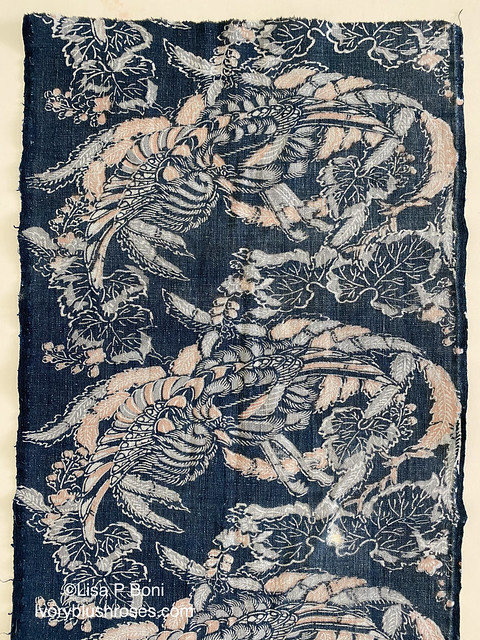
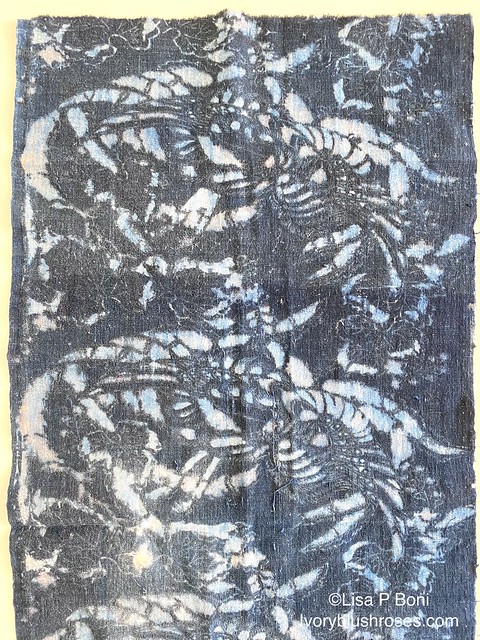

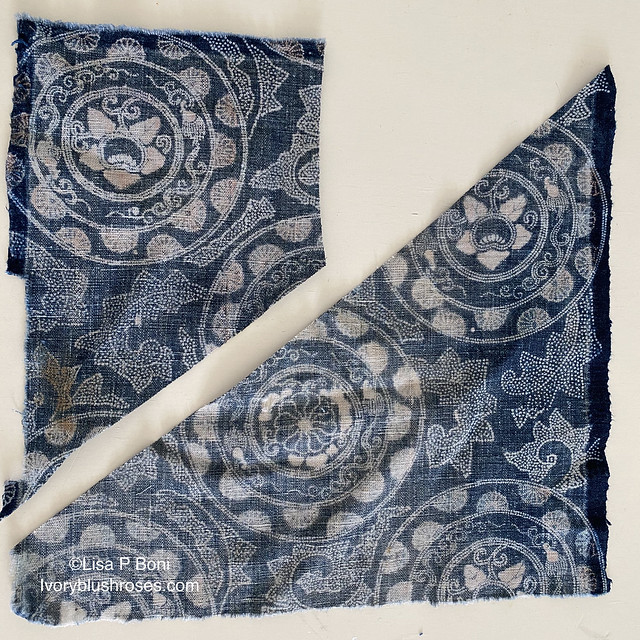
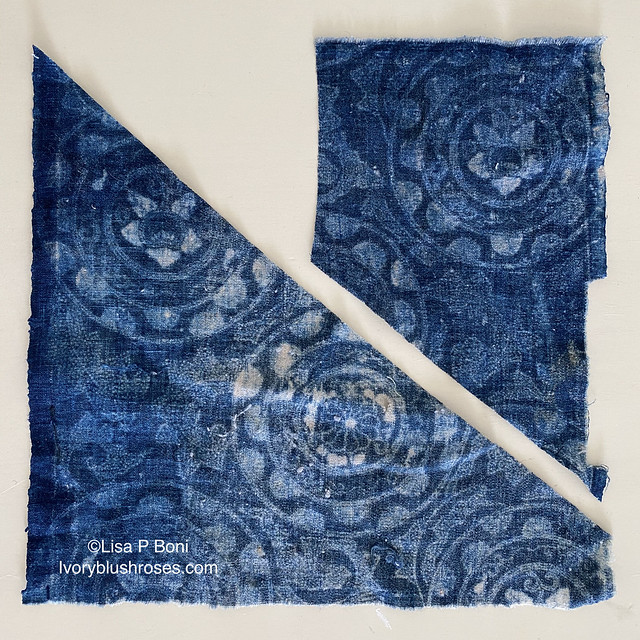

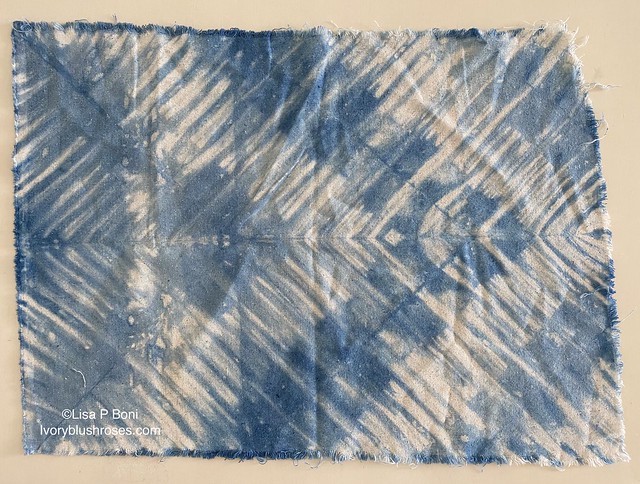






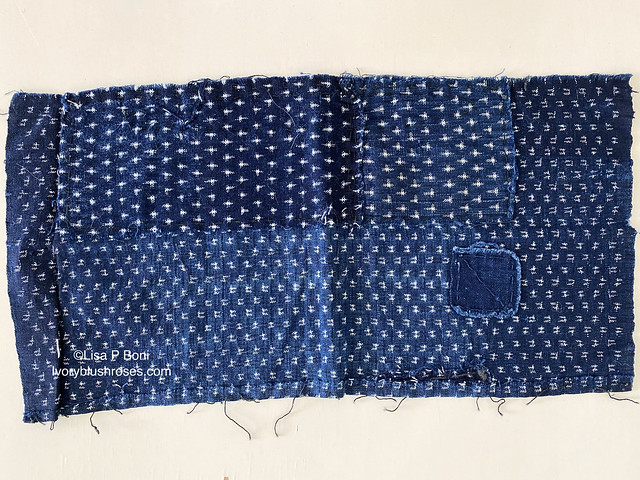

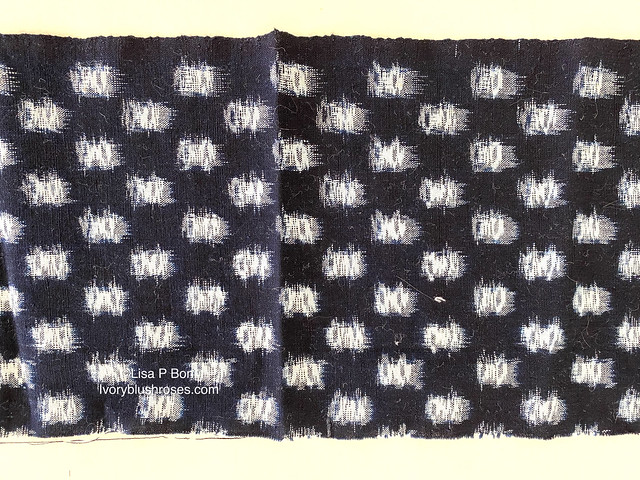

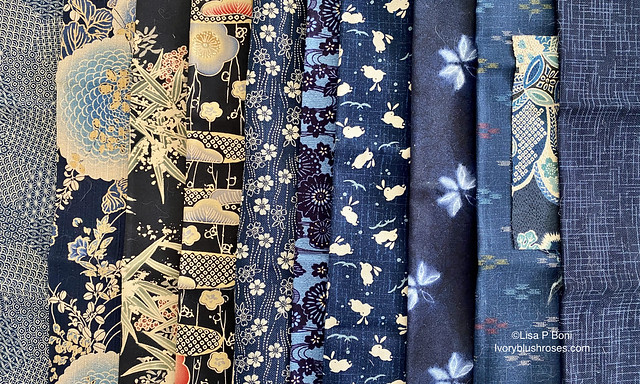

Comments
waste disposal management
recycling and waste management